Outdoor Bonsai: [Characteristics, Care, Types and Sun Exposure]
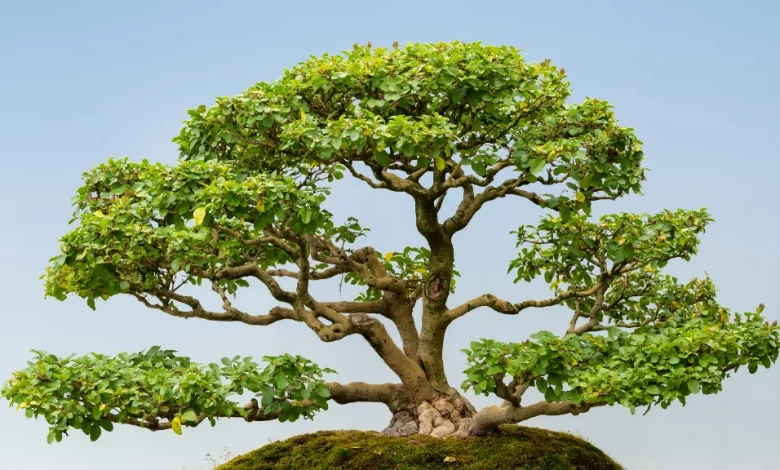
Important points about outdoor Bonsai:
- What are they? An outdoor bonsai is a tree that is worked in a smaller version than its original and that needs the environmental conditions to prosper, such as light, wind, heat and cold.
- How to take care of them? The care of an outdoor bonsai is very similar to what you would have with the same plant in its original size. The place you choose must always be the same, unless the change responds to a cause of force majeure.
- What are the most common? All species of trees can be worked outdoors, the important thing is to choose a tree that is native. Some of the common species that can be worked as outdoor bonsai are pines, maples, junipers and willows.
- How long should they be in the sun? Bonsai must be in full sun for at least half the day, always taking care of the specific demands of each species. In general, it is recommended that they can also enjoy a few hours of shade, but most of it in the sun.
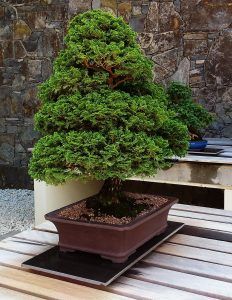 Outdoor bonsai are those that have very specific sun and temperature requirements.
Outdoor bonsai are those that have very specific sun and temperature requirements.
This implies that they cannot stay indoors because their health will be seriously compromised.
In addition, the idea of respecting the life cycle that they would have in their natural habitat includes, of course, the passage through the 4 seasons.
But we do not want to delve much further into this topic in this brief introduction. Better join us to see the rest of the information in the following lines.
What is an outdoor bonsai?
An outdoor bonsai is a tree that is worked in a smaller version than its original and that needs the conditions of the environment to prosper. This implies: sunlight, wind, summer heat, winter cold (to enter vegetative rest), etc.
Actually, most bonsai are oriented to life outdoors because that is where their natural habitat is. The reason is that they need to fulfill their annual cycles, so you have to know how to choose the species well.
The only species that could support life indoors are those that are adjusted to tropical climates, so they don’t need the passing of the seasons.
How to take care of an outdoor bonsai?
The care of an outdoor bonsai is very similar to what you would have with the same plant in its original size. However, here you must pay close attention because they are trees that do not like to be moved frequently.
For this reason, the place you choose should always be kept constant, unless the change responds to a cause of force majeure. Having considered the above, let’s see the main care that an outdoor bonsai needs.
Sunlight
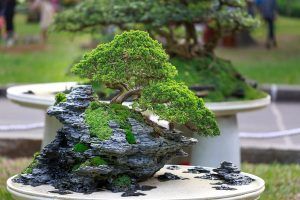 Plants need the sun to provide them with energy so that their internal processes are put into action, especially photosynthesis.
Plants need the sun to provide them with energy so that their internal processes are put into action, especially photosynthesis.
In bonsai this is no different and you must be careful that it receives enough sunlight during the day according to the requirements of the species.
There will be some that need more than others, like pines that prefer absolute exposure. If they don’t get enough, they may start to look defective around their structure, or worse, get sick.
Temperature
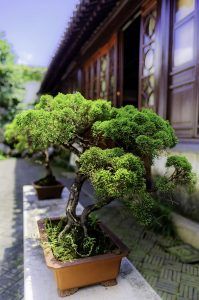 Just as it happens with the sun, a correct temperature will directly influence the health and well-being of the bonsai.
Just as it happens with the sun, a correct temperature will directly influence the health and well-being of the bonsai.
During the spring and summer, even in the fall, they will be radiant, but come winter they may need protection.
This applies, above all, to those spaces where there are frequent frosts and it is possible that this causes considerable damage to the structure.
Humidity
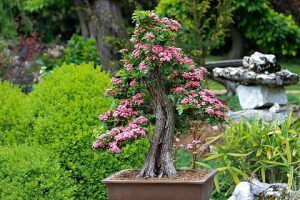 Humidity in bonsai is a relevant issue as part of their care, especially when they are kept in an area that is rather dry.
Humidity in bonsai is a relevant issue as part of their care, especially when they are kept in an area that is rather dry.
If you consider that this is your case, you will have to enhance the humidity conditions of the environment, spraying a little water on the bonsai.
If you want something more durable throughout the day, placing a container of water near it will also help.
Irrigation
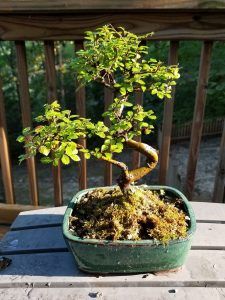 Bonsai tend to be very delicate when it comes to watering because they need a moist substrate, but they do not adhere to any specific calendar.
Bonsai tend to be very delicate when it comes to watering because they need a moist substrate, but they do not adhere to any specific calendar.
The most advisable thing is that you apply the corresponding quotas when you notice that the land is dry.
Take into account that the periods will be variable depending on the time of year and the environmental conditions.
Surely in summer you will need more water than in early spring.
Subscriber
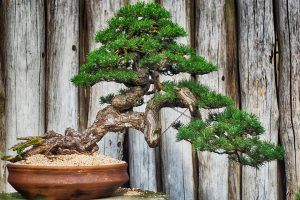 Finally, there is the issue of fertilization, which must be applied following a well-planned schedule to be profitable.
Finally, there is the issue of fertilization, which must be applied following a well-planned schedule to be profitable.
A nutrient deficit in bonsai puts them at risk, but take into account that an excess also so it is better to have balance.
You should even consider the type of fertilizer to use because not all have the appropriate conditions to meet what they need.
What are the most common types of bonsai for outdoors?
All species of trees can be cultivated outdoors, even tropical ones, finding a protection strategy in the winter. The important thing here is to choose a tree that is native because then it will be better adapted to the changes that are generated in the environment.
Remember that there are areas where the winter climate is colder than in others, even spaces where frosts frequently occur. Some of the common species that can be worked as outdoor bonsai are:
- Pines: they are one of the most common bonsai because they adapt very well to growth in this type of practice. There are several types and can be adapted to the shape you prefer.
- Maples: they are large trees in the middle of nature and are possible to work very well as bonsai thanks to their woody trunk and beautiful crown.
- Junipers: they grow ideally as bonsai and are less demanding in care than some other species.
- Willows: yes, although you see them so large and imposing in their natural habitat, willows are species that accept care and growth as bonsai very well.
Other species that we can also highlight in this group are beeches, ash trees, elms.
How long should a bonsai be in the sun?
Bonsai must be in full sun for at least half the day, although always taking care of the specific demands of each species. On days when the sun is really strong, it is possible to protect them by adapting a protective mesh or canvas.
In general, what is recommended is that they can also enjoy a few hours of shade, but most of it in the sun.
Even bonsai that are kept indoors need to enjoy proper lighting to be healthy. Outdoor bonsai are the most frequent and ensuring optimal conditions in the environment will be essential for their health.
It does not matter if they are in a garden, on a balcony or on a terrace, you just have to ensure that they have sunlight, the correct temperature and the other elements mentioned above.
Bibliographic references
- Feasibility Study for Bonsai Production in Tegucigalpa, OW Mejía – 1998 – bdigital.zamorano.edu
- New ways to enjoy bonsai, S Kuribayashi – Niponica: discovering Japan, 2015 – dialnet.unirioja.es
- Landscaping, Lighting and Exterior and Interior Decoration, JMF Veiga – 2020 – books.google.com
- Bonsai: Miniature Trees, P Lesniewicz – 1982 – books.google.com
- The Art of Bonsai, D Relf, D Close – 2020 – vtechworks.lib.vt.edu
Maybe you are also interested in:
- How often and how to water my Bonsai?
- Indoor Bonsai: [Characteristics, Varieties, Care and Irrigation]
- Caring for a Bonsai: [Irrigation, Sun Exposure, Pruning and Fertilizer]
- Carmona Bonsai Care: [Earth, Humidity and Pruning]
- Bonsai Pests and Diseases: How to Identify and Treat Them
- Types of Bonsai: [According to Size and Shape]

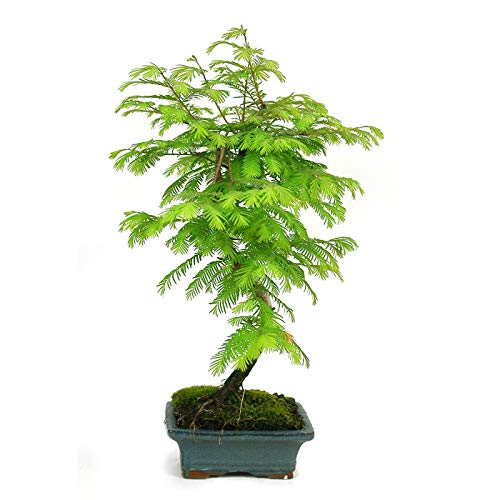
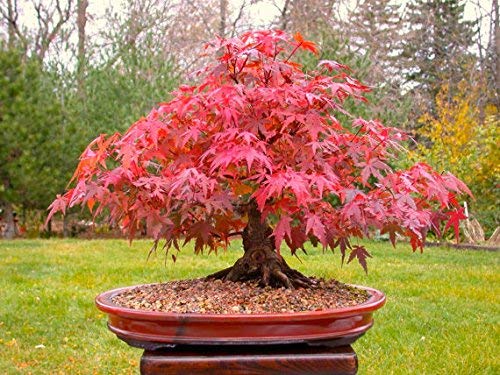
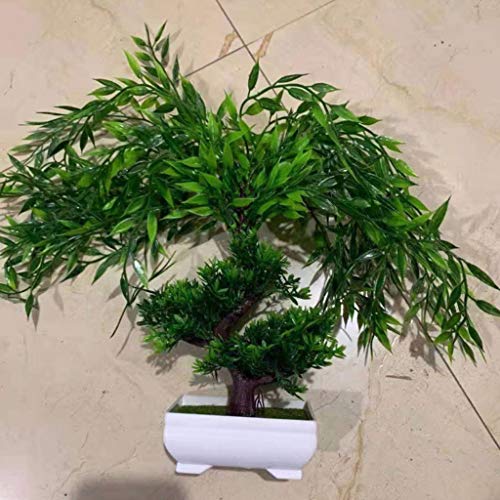
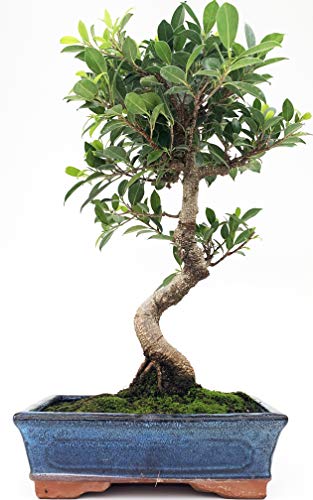
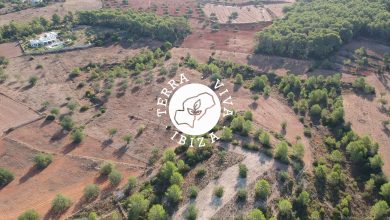
![Photo of Chayotes: [Cultivation, Irrigation, Care, Pests and Diseases]](https://www.complete-gardening.com/wp-content/uploads/2022/08/chayotes-cultivation-irrigation-care-pests-and-diseases-255x220.jpg)
![Photo of Silver Pothos: [Planting, Care, Irrigation and Substrate]](https://www.complete-gardening.com/wp-content/uploads/2022/08/silver-pothos-planting-care-irrigation-and-substrate-390x220.jpg)
